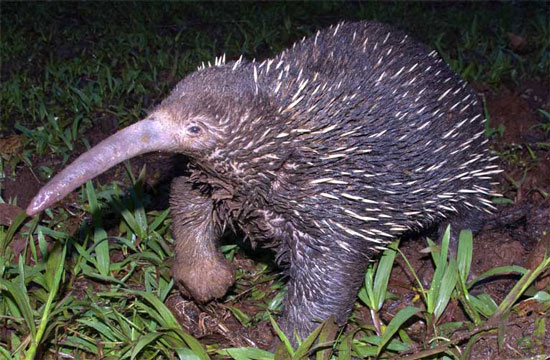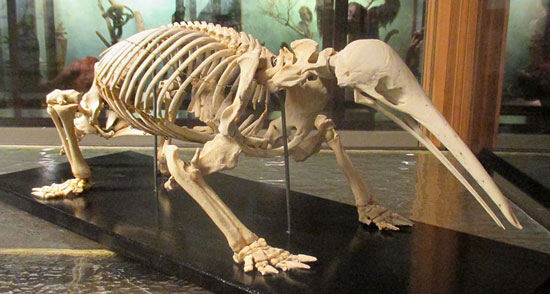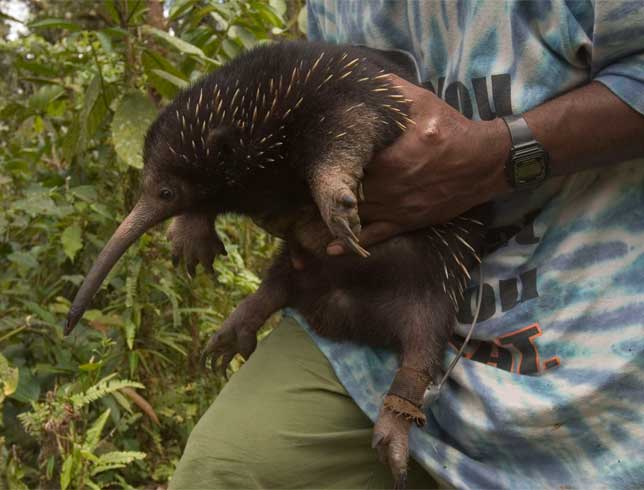|
In one of my favorite scenes in Profusion, a long-beaked echidna makes an appearance (just wait until you read why). And so I have chosen this creature as the awesome animal for this newsletter. Echidnas belong in the very small group of egg-laying mammals called monotremes. Monotremes are one of the three main groups of mammals (the other two are placental mammals and marsupials). But monotremes includes only five species: three species of long-beaked echidnas, the short-beaked echidna, and the duck-billed platypus. All five of the species live in Australia and New Guinea. By the way, you may wonder why my featured awesome animals are typically from New Guinea or Australia, when I actually live in the center of North America. Well, I like to feature animals that appear in the novels of the Diffusion Series. And much of the story takes place on the Indonesian side of New Guinea. Amazing facts about the Long-beaked Echidna Oh my gosh, where to begin! Echidnas are among the strangest of mammals, so there is no shortage of amazing facts. Let's start with the creature's jaw. Echidna's have no teeth, and their jaw is a single bone. So they do not have the ability to bite or chew. They can only slurp things up through their straw-like snout (they like earthworms and other soft ground invertebrates). Okay, let's take this weird mouth one step further. Not only do they have nothing more than a soft, squishy tube for a mouth, but their snouth also has tiny electro-receptors embedded in it, so they can detect the faint electrical fields created by the worms and other soil critters they eat. Echidnas have between 400 and 2,000 electro-receptors in the tip of their snout. See the long-beaked echidna skull below. Echidnas lay eggs. That's right, eggs. Like the platypus does. The eggs then incubate and hatch within a pouch, similar to the pouch of a marsupial (kangaroos and such). But unlike all marsupials and placental mammals, the females do not have teats. Instead, the milk oozes out through the mother's skin in the pouch. And then the young lap it up. At least we think the young lap it up--oddly enough, no scientist has ever seen young echidnas lapping up the milk. Echidnas have the lowest average body temperature of any mammals alive today (89º F, 32º C). In fact, when they hibernate, their temp drops to as low as 41º F (5º C). Because of their low body temperature and slow metabolism, echidnas live up to 50 years. Baby echidnas are called puggles (how perfect is that?). But very few of them have been born (hatched?) in captivity. Only a few dozen have been born in zoos, and in fact it wasn't until 2012 that the first zoo-born parents produced offspring (the baby short-beaked echidna below is one of the offspring). Okay, now for the R-rated portion. Male echidnas have a four-headed penis. Why, you ask? Well, during mating, two of the heads shut down, while the other two enlarge to fit the female's reproductive tract, which happens to have two branches. So why not just have a two-headed penis? Because the males alternate between the two pairs when they mate with more than one female. Why? That's uncertain. Echidnas have impressive tongues. Their tongues are six inches long, and can dart out of their snouts amazingly fast to slurp up worms and insects. Check out this awesome video of a feeding echidna from National Geographic. So, the long-beaked echidna deserves a place in the B.A.H.O.F. (Boss Animal Hall of Fame). FUN FACT: Most people assume the word boss began being used in place of awesome fairly recently (wasn't it popular in the 1990s?). But actually it was used as an adjective in the Oxford English Dictionary in 1881. So for the last 136 years, it has been a good substitute for awesome. Photo Credits:
Long-beaked Echidna #1 - Photo by Muse Opiang Long-beaked echidna being held - Photo by David Gillison Long-beaked Echidna Skeleton - Science News Baby captive-born echidna - Perth Zoo
1 Comment
|
Stan's Cogitations
Everyone needs a creative outlet. That's why I write. Archives
July 2024
|





 RSS Feed
RSS Feed